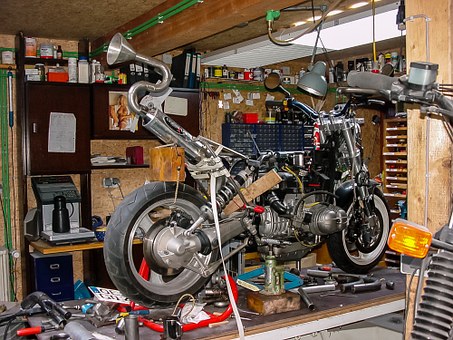Make a Habit of Regular Motorcycle Maintenance
FUN Motorcycle Training “LLC” wants everyone to make sure their motorcycle is ready for the next ride! Here are some tips for regular maintenance.
So you’ve made the decision to make your motorcycle your primary vehicle for getting around. Great choice: you’ll likely save money on gas, parking, and repairs. But before you ride off into the sunset, plan a regular maintenance routine that will help ensure you’ll be riding that bike for years to come.
Create a Check-Up Checklist
Developing a motorcycle maintenance checklist can help you avoid costly (and unnecessary) repairs and potential safety issues. It’s also a good idea to become familiar with your bike’s owner’s manual as maintenance requirements can vary between models. If you don’t have the owner’s manual, you’ll likely find it available online.
Check these features regularly:
Tires: Stay aware of the tread depth and look for unusual wear patterns. Always make sure they’re at the correct pressure; under-inflated tires are prone to blowouts and over-inflated tires wear more quickly. Here’s a quick way to test the wear of your tires: insert a quarter between the grooves of the tire. If the tread doesn’t reach past the top of Washington’s head, it’s probably time for new tires.
Oil: Check the level every week or so and top it off if necessary. Changing your oil is a simple, cheap way to keep your bike in good shape. If your bike is older or you drive it regularly for long distances, you’ll need to change your oil more often. Synthetic oil is more expensive, but it makes the need for changes less frequent. Refer to your owner’s manual for info on how often to change your bike’s oil.
Lights and signals: Check your headlights, brake lights, high and low beams, and turn signals regularly. Since they won’t necessarily show wear—and can actually just quit working suddenly—set up a reminder. The last thing you want is to be stranded because your lights stopped working.
Battery: Examine your battery and cables for corrosion or loose connections. Use a mixture of baking soda and water to clean the connections, then scrub with a household toothbrush. Use a voltmeter to test the battery and a charger if it’s depleted. You don’t want to be caught out in the cold—literally—with a bike that won’t start.
Brakes: Keep an eye on brake pad thickness and brake fluid level. When brake pads wear thin, your ability to stop quickly and efficiently is compromised. Top off low brake fluid to the “full” mark or change it according to your owner’s manual instructions.
Chain: Use a commercial spray to lubricate the chain liberally and often, especially if you’re riding your bike every day. Dryness causes friction that can lead to poor performance or, worse yet, a chain that breaks while you’re riding.
Fuel: Examine the fuel lines, keeping an eye out for leaks or other damage.
Oil, air, and fuel filters: Regularly check them to maintain optimal engine performance and efficiency. Your owner’s manual will provide replacement intervals.
Steering: Check and tighten your handlebars and the steering nut. Turn the bars to make sure your steering feels smooth and tight and replace the bearings if the steering feels loose in any way.
Schedule a Yearly Tune-Up
Even the most dedicated gearhead should take the bike to the shop for service every once in a while. A professional mechanic is trained to spot potential hazards you may have overlooked. The beginning of riding season is a great time for a service appointment, especially if your bike’s been stored for the winter.
Proper winter storage is a smart way to prevent service issues. Sitting in the cold for months on end can cause battery drainage, corrosive body rust, and damage to the fuel lines.
FUN Motorcycle Training “LLC” wants everyone to enjoy your ride!!

